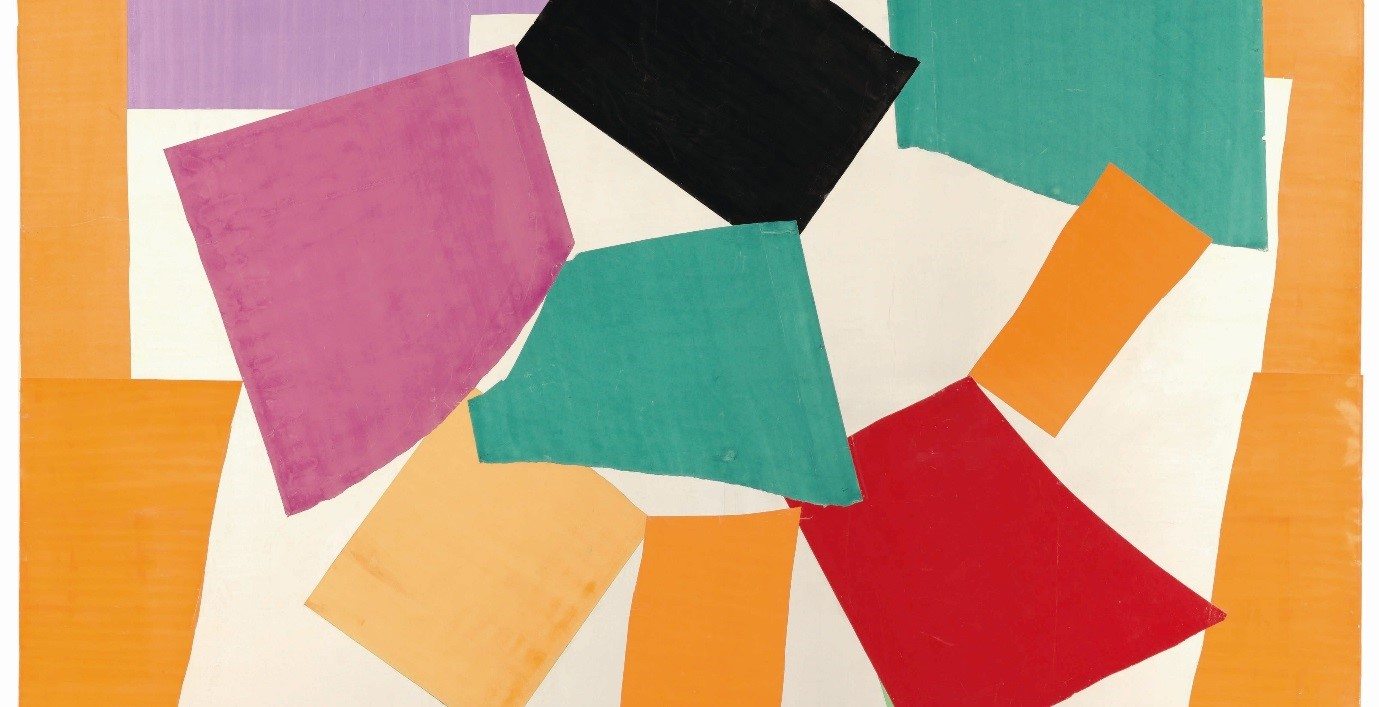A cut above the rest
It seems truly absurd that a man suffering from ill health could create such an abundance of exciting modernist art just from painted paper, pins and glue. It might seem primary school like to many of us, but an ageing Henri Matisse did not let his limited mobility stop him from creating wonderfully deep and vibrant art which soon became realised as an innovative and new medium.
Now, much of Matisse’s most acclaimed art work comes from the cut-out collection which boasts 120 incredibly unique pieces made between 1936 and 1954, all of which are showcased for the first time in 50 years at the Tate Modern. The brilliance of unifying all of Matisse’s compositions is that his first tentative steps into the new form can be tracked throughout various different projects. First showing it as his alternative to painting until Matisse’s visions become fully realised in the 10m long Large Composition with Masks 1953 alongside its sister works, Memory of Oceania 1953 and the well-known, and universally recognised The Snail 1953. A photo of Matisse’s house shows that these huge works served to bring the outside in when Matisse was no longer able to leave his house. With the help from his assistants, he was able to create mural-type works which encompassed bright colours and natural shapes which he could continuously add to, move around and adapt until he found the right composition.
Alongside Matisse’s extravagant pieces, are his 1947 designs for a Dominican Chapel of the Rosary in Vence, Southern France where he also had his home and studio. What began as a request for a single stained glass window turned into a huge project for Matisse as he took on the whole decorative scheme for the chapel from the windows to the robes worn by the priest. One of the designs shown in the exhibition is his charcoal design of the Virgin Mary and Christ. It is vast and simple, and yet exudes elegance and reflects Matisse’s unique style. It is extraordinary how such vibrant and often quite busy compositions can reflect a peacefulness and serenity. Although bold, Matisse’s smooth and flowing designs are beautifully balanced with each work presenting a mixture of new ideas and shapes, and also retaining continuity as figures and colours are recognisable throughout the collection.
As Matisse’s skill and experience of the cut-out form increased so too did the scale of his work. When published in a book, Matisse was disappointed with the loss of depth that was integral, especially to his late works. In Zulma 1950, Matisse exhibits a huge sense of depth with layering paper and using perspective as the figure leans on highly angled tables, lending it to feel youthful and radical. Likewise, while many of his cut-outs exhibit highly coloured and full designs, some are more sparse, but nonetheless mesmerising. Acanthuses 1953 displays Matisse’s masterful eye for colour and composition as he uses the white neutral background as an active part of the work which he felt gave a great contrast to the coloured paper and gave it a ‘rare and intangible quality’.
Not only is it the scale and quantity of Matisse’s later works that the Tate has which makes this exhibition so wonderfully dynamic, but it is the thought that Matisse found a real joy and pleasure from creating these compositions. He writes, ‘I don’t think I have ever found such balance as I have in creating these paper cut-outs’. The design, the precise, yet flowing cuts encompass an energy and simultaneously easy viewing which is just brilliantly consumable in spite of the sprawling vastness of some of the pieces. They seem effortless and yet through the Tate’s hanging of the cut-outs, the extent of work and reworking of pieces can be seen as Matisse tacks extra pieces of paper on to a design, or re-pins specific shapes many times over to find the correct combination where the eye just wants to endlessly drink the colours and shapes. While there is a wildness to the designs, there is also a sense of knowing as he is ‘happily anticipating things to come,’ leaving us with a sense of self appreciation and enjoyment from his work as he writes that ‘it will only be much later that people will realise to what extent the work I am doing today is in step with the future’. Matisse recognised the richness in his work and the ability he had to create something which displayed the depth and liveliness which only painting had done so before.

Comments